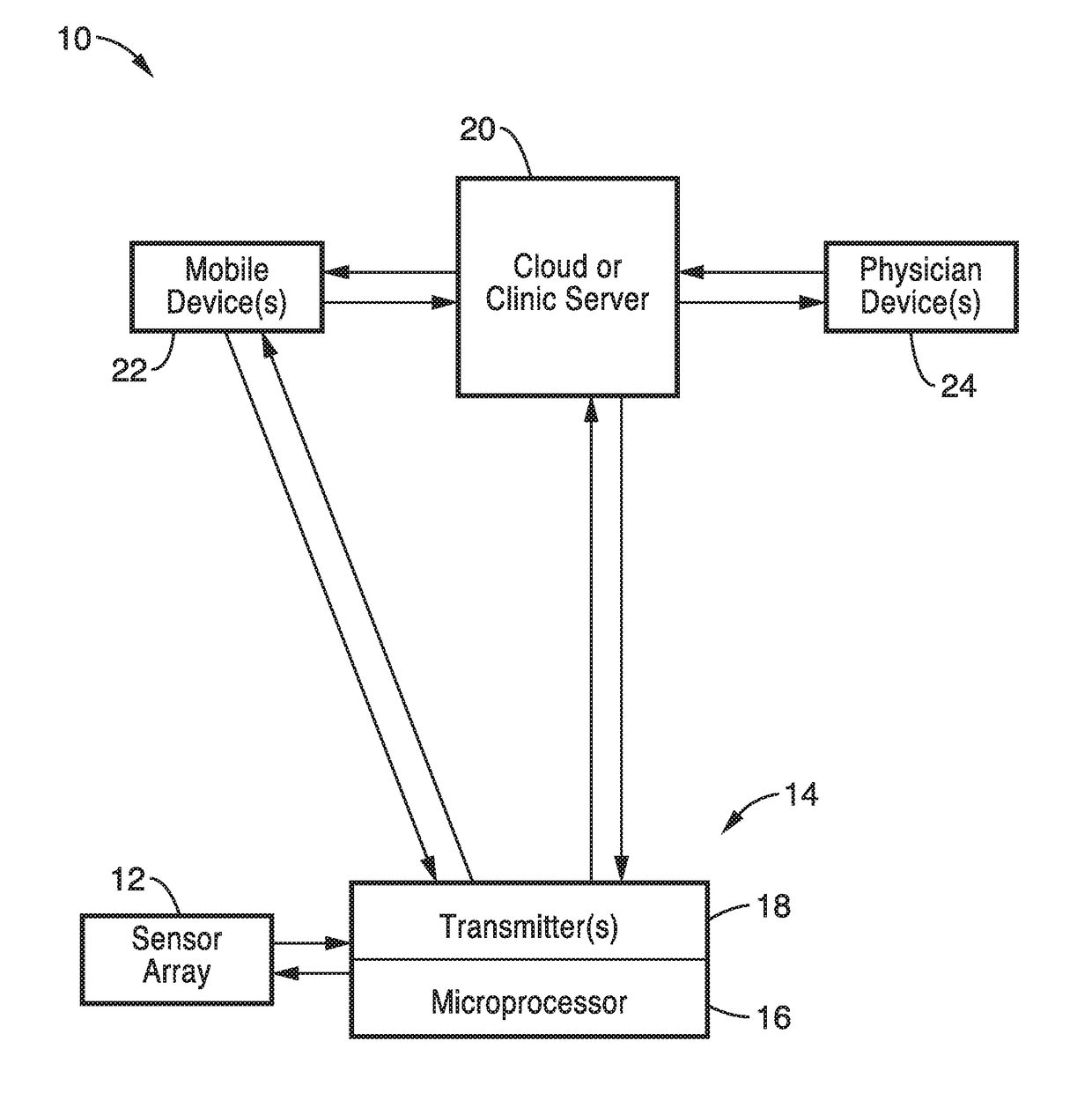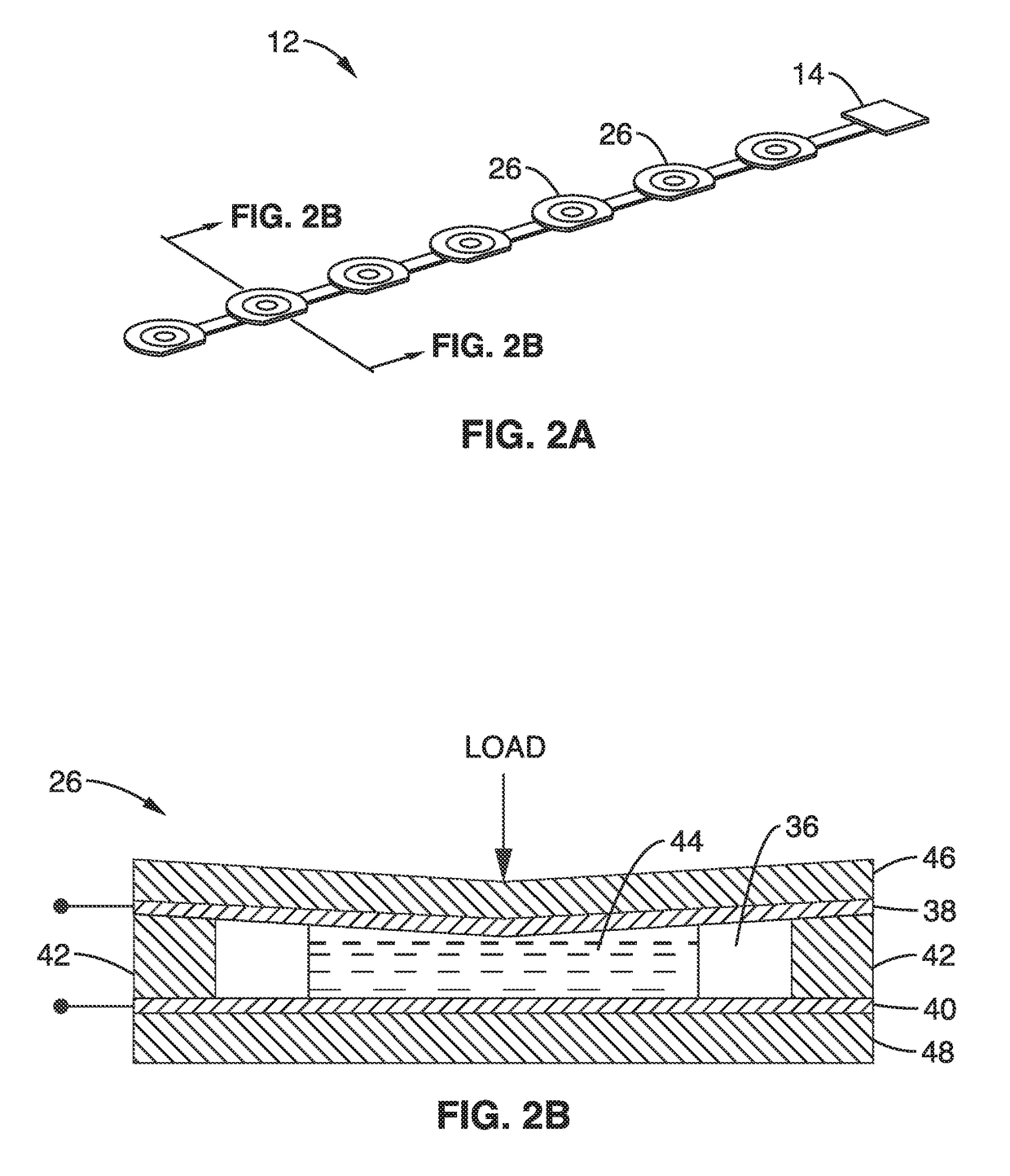Telemedical wearable sensing method for management of chronic venous disorders
a technology of chronic vein disease and wearable sensing, applied in the field of medical sensing and monitoring devices and methods, can solve the problems of never determining the therapeutic pressure dose, unoptimized treatment parameters, etc., and achieve the goal of optimizing the overall treatment of a particular patient, reducing treatment times, and achieving objective quality
- Summary
- Abstract
- Description
- Claims
- Application Information
AI Technical Summary
Benefits of technology
Problems solved by technology
Method used
Image
Examples
example 1
[0103]In order to demonstrate the technology, a system was designed based on a single ionic gel-based pressure sensor of the design depicted schematically in FIG. 2B. The sensor used a nanoliter ionic gel droplet sandwiched between the top and bottom flexible ITO coated polyethylene terephthalate (PET) membranes. A separation layer supports the spacing between the two sensing membranes and on one side of the membrane, a 10 μm-high, 200 μm-diameter micropillar perform as the anchor for the ionic gel. Upon the ionic gel-electrode contact, electrical double layer (EDL) capacitance has formed. Under external mechanical loads, the polymer membranes deform, leading to the circumferential expansion of the ionic gel droplet. The variation in the ionic gel and electrode contact area will lead to a proportional change in the interfacial capacitance. To facilitate pressure distribution measurement, a 1 by 8 sensing array with 3 cm interval was designed and fabricated to achieve a pressure dist...
example 2
[0106]In order to further demonstrate the technology, a low-power wireless interface for pressure data acquisition and processing of the microfluidic sensing array was constructed. The system provided an analog front, a microcontroller and a Bluetooth transmission module as well as graphic user interface. Analog-front component converted sensor impedance into a voltage signal. The ultra-low-power MSP430 microcontroller allowed all digital processing, including data acquisition, processing and serial communication, from which the Bluetooth transmission module can be used to achieve wireless communication with PC, tablet, cellular phone user interface or any other mobile platform.
[0107]The analog front was devised to interrogate each capacitive sensing element of the microfluidic sensing array consecutively and the collective interface pressure data was acquired into an electronic circuitry. The interfacial EDL capacitance was found to offer both stable high unit-area capacitance and ...
PUM
 Login to View More
Login to View More Abstract
Description
Claims
Application Information
 Login to View More
Login to View More - R&D
- Intellectual Property
- Life Sciences
- Materials
- Tech Scout
- Unparalleled Data Quality
- Higher Quality Content
- 60% Fewer Hallucinations
Browse by: Latest US Patents, China's latest patents, Technical Efficacy Thesaurus, Application Domain, Technology Topic, Popular Technical Reports.
© 2025 PatSnap. All rights reserved.Legal|Privacy policy|Modern Slavery Act Transparency Statement|Sitemap|About US| Contact US: help@patsnap.com



